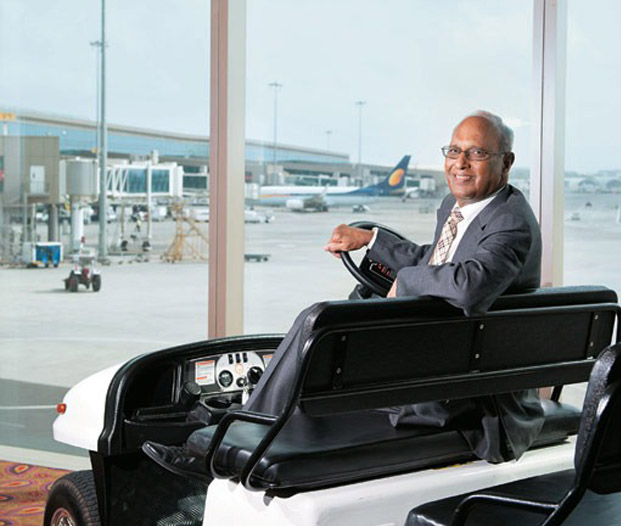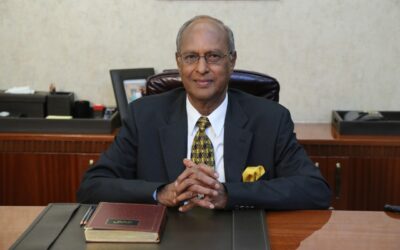Chairman of the GVK Group, Dr. GVK Reddy assesses the strengths of the new and promising Electricity Draft, underscoring the interest of the nation through a series of suggestions and unveiling the possible challenges that lie ahead of it.
What is the National Electricity Policy Draft
It is an ambitious government initiative that aims to accelerate the power infrastructure of the country, creating a sustainable power highway that makes electricity accessible to every pocket in the country.
More electricity generation & supply and the extended use of renewable power sources are at the core of the project. Of late in 2021, two months after the project was announced, the Ministry of Power, India set up a bench of experts to formulate and map this new strategy. The panel comprises an amalgamation of members from the various state governments, The NITI Aayog, Central Electricity Authority and the Ministry of New and Renewable Energy. The former Chairman of the Central Electricity Regulatory Commission (CERC) – Gireesh Pradhan heads the panel while industry professionals from esteemed institutions like IPP, Federation of Indian Chamber of Commerce and Industry (FICCI), Confederation of Indian Industry (CII) etc are regular invitees to the panel meets and discussions. Grid operation, power market, regulatory process, smart meters, vehicle charging stations are some of the many extended gambits that the project promises. GVK Group’s Chairman, Dr.GVK Reddy remarks on the capabilities of this value proposition as, “This project holds the might and vision that can completely transform the power landscape of the country but without resourcefulness, this will never fly.”
The Looming Crisis Behind
Drafting the National Electricity Policy has not been a recent interest for the nation. The year 2005 witnessed the country’s first step in formulation of an Electricity Policy and GVK Reddy notes how, “there has been a colossal change in power supply and distribution by the decades, we have made a march to a surplus power generator from an electricity deficit country”. Ever since the first draft of 2005, more and more households have access to grid connected electricity today, the generation of renewable energy has gone up, per capita consumptions have doubled and the transmission lines have extended to cover nooks of the country. But we are yet taken back to the question of- Why is India still fighting energy poverty?
Issues of rural electrification, transmission, generation and distribution, lack of subsidies, technological lag are some but not all the issues that contemporary India continues to live with. Nearly 20% of electricity that our country produces are parts of AT&C Losses- the energy lost due to commercial or technical reasons.
Practicable Power Supply
GVK Reddy explains how, “India’s energy sector is one of the most fundamental components to an infrastructure that determines our economic growth as a nation.” Combined with this truth, we also have a rapidly increasing population of consumers to support, along with the growing industrial landscape in our country. He believes that as digitalization becomes the new mode, channel, language and means for people to work through the pandemic times, without electricity in every household, the country cannot adapt to the new world order. With attempts to include state governments to the roadmap is a great start for us to understand the intricacies of the energy needs of the country. The policy further needs to detail the interest of both industries and consumers to be able to create a truly effective plan. GVK Reddy further brings to notice how environment protection and sustainable development are the guiding notes to make a more futuristic plan. Our excellent geographical advantages in solar or wind power are to be used to the optimum, to turn potential resources to tools that harbour the energy efficiency of future India. He expresses great hopes in the combined wisdom of the expert panel that drafts the country’s reformed Electricity Plan stating his confidence in the resolutions of battling differential tariffs, effective coal technology, higher use of storage technology, retrofitting existing coal power plants, speeding installation of conventional dams etc., in the plan.
Challenges down the road
GVK Reddy evaluates the possible hurdles down the road that the plan might possibly encounter in practise. Lack of funding could be a big issue that might follow- The government and the ministry has detailed down its targets with renewable energy and yet made various plans for new projects to follow. However, the real implementation also lies in the hands of the various stakeholders and the investments of private enterprises. This leaves much of the effectiveness of the draft in the hands of the investment climate and economic environment that the country sees. Efforts are to be made so that stakeholders realize the mandates of the objectives in the policy while also lucrative possible advantages are to be created to attract more investments. Furthermore, the policy blankets several of India’s interlinked formulations like sustainable development in energy, tariff regulation, energy infrastructure, renewable power projects and yet generation, distribution and consumption in power. Many voice their concern for the need of a separate National Tariff Law for better price regulations and more attention to the issues relating to tariff in India.
For the future, he exclaims how the National Electricity Policy Draft 2021 is a fundamental stepping stone in creating a sustainable and developed country. This puts a lot of esteem on the project as much as critical eyes. He quotes, “This plan nurtures a better energy future for India, a goal that resonates with each one of us. The future is indeed to be driven through technology, energy-powered communities and resources that reach all!”
Source: The Indian Awaaz


